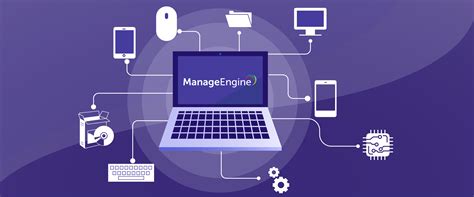5 IT Asset Tips

In the realm of IT asset management, efficiency and organization are key to ensuring that a company’s technological infrastructure runs smoothly and effectively. Effective management of IT assets can lead to cost savings, improved security, and enhanced productivity. Here are five critical tips to consider for optimal IT asset management:
1. Implement a Comprehensive Inventory System
A thorough inventory is the foundation of successful IT asset management. This involves creating a detailed list of all IT assets, including hardware, software, and licenses. Utilizing asset tracking software can help automate this process, ensuring that all assets are accounted for and their status is up-to-date. This system should be capable of tracking assets from the moment they are acquired, through their deployment, use, and eventually to their disposal or retirement.
2. Adopt a Lifecycle Management Approach
IT assets go through various stages from procurement to disposal. Adopting a lifecycle management approach allows organizations to manage assets more efficiently at each stage. This includes planning and procurement, deployment, maintenance and support, and finally, retirement or disposal. By considering the full lifecycle of an asset, organizations can make better purchasing decisions, reduce maintenance costs, and ensure timely upgrades or replacements, minimizing downtime and maximizing asset utility.
3. Enhance Security Through Asset Management
Security is a critical aspect of IT asset management. Each asset, whether it’s a piece of hardware or a software application, represents a potential vulnerability that could be exploited by malicious actors. Effective IT asset management involves regularly updating software, deploying security patches, and ensuring that all assets comply with the organization’s security policies. Moreover, managing access to assets, through techniques like role-based access control, can further enhance security by limiting who can interact with sensitive assets.
4. Optimize Asset Utilization
Underutilized assets can represent a significant waste of resources, while overutilization can lead to inefficiencies and downtime. Optimizing asset utilization involves ensuring that the right assets are allocated to the right tasks and users. This can be achieved by monitoring asset usage, identifying areas of under or overutilization, and making adjustments accordingly. Tools like virtualization and cloud computing can help in optimizing resource allocation, allowing for more flexible and efficient use of IT assets.
5. Ensure Compliance and Governance
Finally, IT asset management must align with the organization’s overall compliance and governance frameworks. This includes ensuring that all software licenses are up-to-date and compliant with vendor agreements, managing data privacy in accordance with regulations like GDPR or CCPA, and adhering to industry-specific standards and regulations. Implementing a governance framework for IT assets helps in risk management, audits, and ensures that IT operations are aligned with business objectives and legal requirements.
Conclusion
Effective IT asset management is not merely about tracking and maintaining inventories; it’s a strategic approach that can significantly impact an organization’s bottom line, security posture, and operational efficiency. By implementing these tips, organizations can streamline their IT operations, reduce costs, enhance security, and improve overall productivity. In a rapidly evolving technological landscape, adopting a proactive and comprehensive approach to IT asset management is not just beneficial, but essential for staying competitive and secure.
What are the benefits of implementing a comprehensive inventory system in IT asset management?
+A comprehensive inventory system allows for accurate tracking of IT assets, reducing the risk of loss or theft, and enabling better planning and decision-making regarding asset acquisition, maintenance, and disposal. It also facilitates compliance with regulatory requirements and improves budgeting by providing a clear picture of existing assets.
How can adopting a lifecycle management approach benefit IT asset management?
+Adopting a lifecycle management approach helps in making informed decisions at each stage of an asset's life, from planning and procurement to disposal. It ensures that assets are maximally utilized, maintained properly, and replaced or upgraded at the right time, leading to cost savings, improved efficiency, and reduced downtime.
What role does security play in IT asset management, and how can it be enhanced?
+Security is crucial in IT asset management as each asset can be a potential vulnerability. Enhancing security involves regularly updating and patching software, managing access to assets, ensuring compliance with security policies, and deploying robust security measures such as encryption and firewalls. Regular audits and vulnerability assessments can also help in identifying and mitigating potential security risks.
How does optimizing asset utilization contribute to efficient IT asset management?
+Optimizing asset utilization ensures that resources are not wasted on underutilized assets and that overutilization does not lead to inefficiencies and downtime. This can be achieved through monitoring usage, allocating assets based on need, and leveraging technologies like virtualization and cloud computing to enhance flexibility and scalability. Proper utilization can lead to cost savings, improved productivity, and better alignment of IT assets with business objectives.
Why is ensuring compliance and governance important in IT asset management?
+Ensuring compliance and governance is important because it helps in managing risks, avoiding legal and financial penalties, and maintaining the trust of stakeholders. Compliance with regulations and industry standards ensures that IT operations are ethical, secure, and beneficial to the organization. A governance framework for IT assets provides a structured approach to decision-making, ensuring that IT asset management aligns with the organization's overall strategy and objectives.
In conclusion, effective IT asset management is a multifaceted discipline that requires a strategic, lifecycle-oriented approach. By focusing on inventory management, lifecycle management, security, asset utilization, and compliance, organizations can unlock significant benefits, including cost savings, improved efficiency, and enhanced security. Implementing these strategies requires a deep understanding of both the technical and business aspects of IT assets, underscoring the need for skilled professionals who can navigate the complexities of IT asset management with ease. As technology continues to evolve, the importance of IT asset management will only continue to grow, making it an essential component of any organization’s operational framework.



